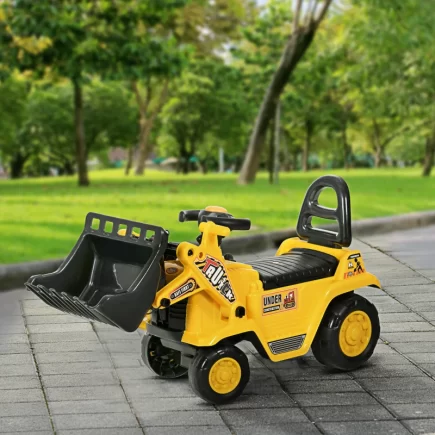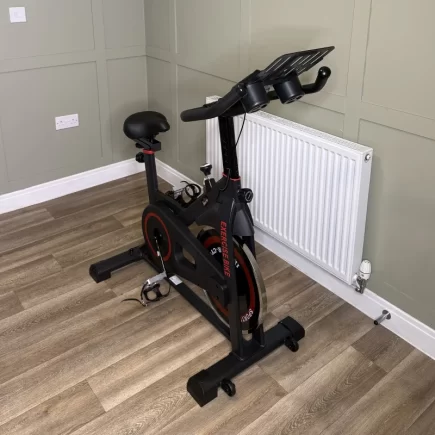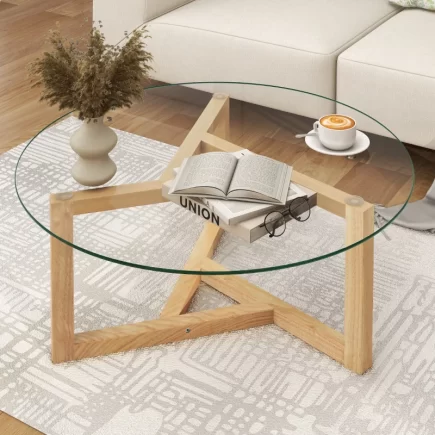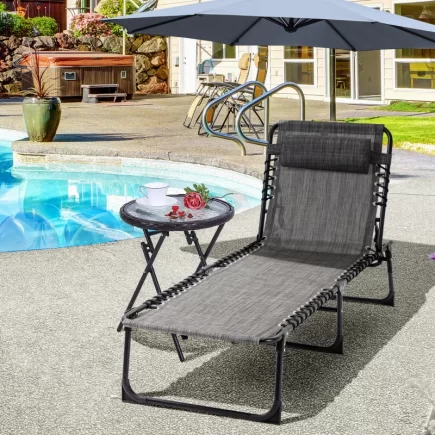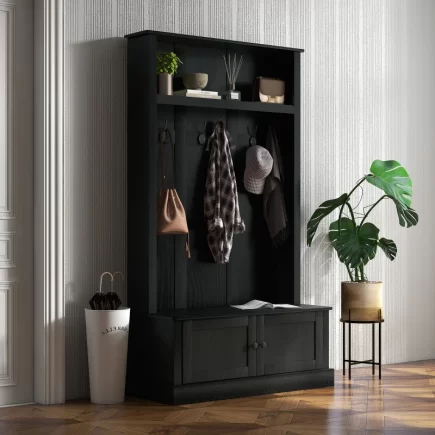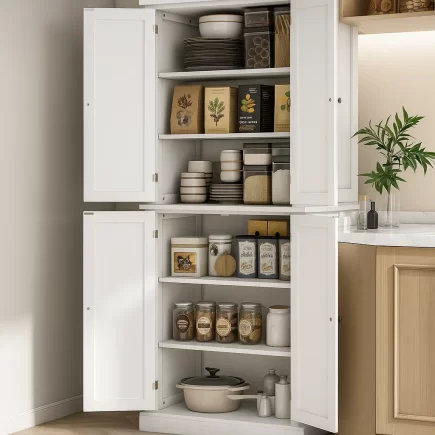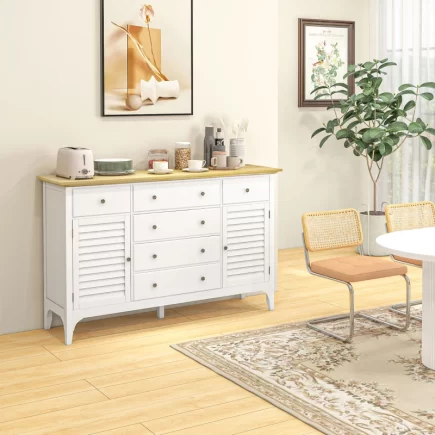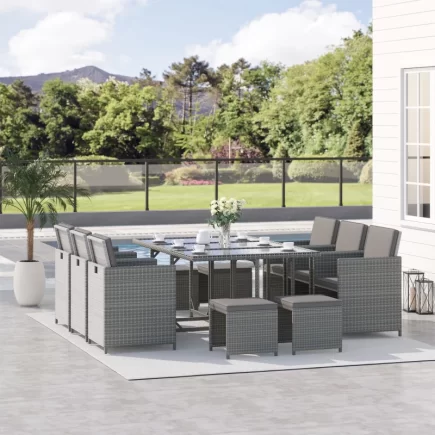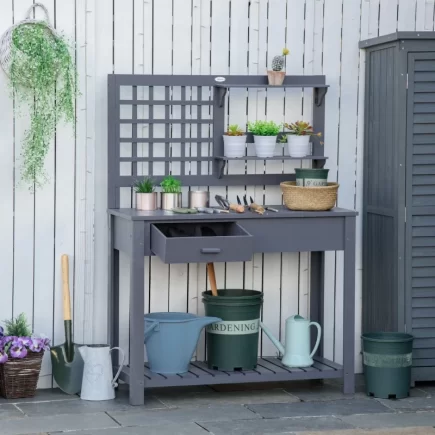
When designing your space, the right furniture choices can completely change the way a room looks and feels. One piece that quietly makes a big impact is the console table. It’s one of the most versatile and stylish additions you can bring into your home. Whether placed in the entryway to welcome guests, in the living room to hold décor and essentials, or in a hallway to add interest and storage, a console table blends form and function effortlessly. It’s the kind of piece that works hard behind the scenes while elevating the overall look of your space.
Step By Step Guide For Choosing Console Table
Step 1: Measure Your Space
Before picking out a console table, take time to understand the space where it will go. This simple step can prevent the frustration of choosing something that doesn’t fit, feels awkward, or throws off the flow of the room.
Start by checking these three key areas:
1. Wall or Floor Space
Look closely at the spot where you plan to place the table. How much room do you actually have? The goal is to find a piece that fits comfortably without crowding the area or feeling too small to make an impact.
2. Walking Room
Consider how people navigate through the space. Will placing a console table here interrupt that flow. Make sure the table leaves enough clearance so doors open freely and people can pass by easily.
3. Nearby Furniture
Look at the surrounding pieces. Is there a sofa, bench, or storage unit nearby? Choose a console table that complements these items in both height and style. You want it to look like it belongs, not like it was squeezed in.
Step 2: Choose the Right Material for Style and Durability
When choosing a console table, material plays a big role in how the piece looks, feels, and holds up over time. Whether you’re going for timeless, modern, or luxurious, there’s a material to match your space and lifestyle.
Wood: Warm and Classic

- Wood Console Tables are one of the most popular choices because of its natural warmth and character. It blends easily with many styles rustic, traditional, coastal, or farmhouse.
- You can opt for sturdy hardwoods like oak, walnut, or teak if you want something that is both long-lasting and rich in texture. If you’re working with a budget, materials like pine or MDF offer similar looks at a lower cost, though they may not be as durable in high-traffic areas.
Metal: Sleek and Modern

- Metal Console Tables are perfect for industrial or minimalist interiors. They often feature slim profiles and clean lines that add structure without bulk.
- They’re usually lighter in weight and quite durable, making them great for everyday use. Just be mindful of moisture exposure if the table is placed near windows or humid areas, as some metals may be prone to rust over time.
Glass: Light and Airy

- Glass Console Tables are ideal for smaller spaces or homes with a modern aesthetic. The transparent surface opens up the visual space and keeps things feeling light and uncluttered.
- While beautiful, glass does require regular cleaning to keep smudges and dust at bay. Look for tempered glass for added strength and safety.
Stone or Marble

- For a statement piece, stone or marble console tables bring instant elegance. These materials feel high-end and add a sense of luxury to your home.
- They’re extremely durable but also heavy and more expensive than other options. Once placed, you likely won’t want to move them often. Also, some stone surfaces may need sealing to protect against stains.
Step 3: Style and Design
Console tables come in a wide variety of styles, and choosing the right one can instantly elevate the look of your room. The key is to select a design that fits your existing décor while expressing your personal taste.
Traditional Style

If you love timeless elegance, a traditional console table may be the perfect match. These often feature rich wood tones, ornate carvings, and classic silhouettes that bring warmth and sophistication to your home. They work beautifully in formal entryways, dining rooms, or alongside antique-inspired furniture.
Modern and Contemporary Style
Modern console tables lean into clean lines, smooth surfaces, and streamlined shapes. You’ll often find metal frames, glass tops, and bold finishes that add a polished, urban feel. These designs are great for open-concept spaces, city apartments, or anyone who prefers a sleek and up-to-date look.
Rustic Style

For a homey and relaxed vibe, rustic console tables are a go-to. Think weathered wood, natural textures, and earthy tones. Whether made from reclaimed wood or finished with a distressed look, these tables bring character and charm. They’re a perfect match for farmhouse, cottage, or country-inspired décor.
Minimalist Style

Minimalist tables focus on simplicity. With clean shapes, neutral tones, and little to no decoration, they create a calming presence in any room. Ideal for small spaces or modern homes, minimalist designs keep things uncluttered while still offering practical surface space.
Step 4: Decide If You Need Storage
This is a step many people overlook, but it can make or break how useful your console table is. Ask yourself what the table needs to do just look good, or also help keep things organized?
If You Need Storage

Go for a console table that offers built-in function.
- Drawers are perfect for stashing small items like keys, mail, phone chargers, or anything else you want out of sight.
- Shelves give you open space to add baskets, store books, or display stylish storage boxes.
- Cabinets provide even more concealed space, which is especially helpful in entryways or dining areas where you might store seasonal items, linens, or serving essentials.
If You Don’t Need Storage

- Open designs with clean lines help keep the space light and airy.
- Tables with sculptural bases or unique shapes can become a statement piece, especially when drawers or cabinets don’t visually weigh them down.
Storage features add visual weight and make the table look more solid and substantial. That’s great if you need function, but in smaller rooms or minimalist homes, it can feel bulky. Choose only what you truly need.
Step 5: Choosing Room-by-Room
Console tables aren’t one-size-fits-all. The best design for your home depends on where you plan to place it. Here’s how to choose the right table based on the room it’s going into, with real tips for getting it right the first time.
Entryway
This is often the first spot people see when entering your home, so it should look polished but also handle daily essentials.
- Choose a console table with drawers to hold keys, wallets, and sunglasses so they’re easy to grab on your way out.
- Hang a mirror above the table to reflect natural light and make the space feel bigger.
- Go with durable materials and finishes that can handle high traffic and everyday use.
Living Room
In living rooms, console tables often sit behind sofas or along open walls.
- If placing it behind a sofa, try to match the height to the back of the couch for a smooth, intentional look.
- Style it with layered décor like lamps, coffee table books, candles, and decorative trays.
- If placing electronics nearby, make sure cords can be hidden or managed neatly.
Hallway
Hallways can feel empty or forgotten, and a console table can bring them to life without taking up too much space.
- Look for slim designs with a narrow profile to keep the area easy to navigate.
- Open or floating styles work especially well in tighter spots and help maintain an airy feel.
- Keep the styling minimal. A small plant, a stack of books, or one piece of art is enough.
Bedroom
In the bedroom, console tables can double as vanities or TV stands depending on your needs.
- Pair the table with a mirror to create a simple vanity setup. Tuck a small chair or pouf underneath to save space.
- If using it as a media table, make sure it’s wide and sturdy enough to support your TV and any components you need to store.
Dining Room
Console tables are great in dining rooms for both serving and storing.
- Choose a longer table if the space allows, giving you room to set out dishes or serve during gatherings.
- Look for models with cabinets or lower shelves to store extra plates, napkins, or glassware.
- Match the table’s finish or style to your dining set for a coordinated look.
Budget Breakdown
| Price Range | What You’ll Get |
| Under $100 | Simple MDF/laminate designs, basic frames |
| $100–$250 | Stylish finishes, storage features, durable |
| $250–$500 | Solid wood, designer styles, better hardware |
| $500+ | Custom, artisan, or luxury materials |
Step 6: Common Mistakes to Avoid
Even the most beautiful console table can feel out of place if it doesn’t suit your space or needs. Here are some of the most common mistakes people make, along with tips on how to avoid them.
1. Skipping the Measuring Tape
It’s easy to fall in love with a table online or in-store, but if you don’t measure your space first, you might end up with something that’s too big, too small, or awkwardly shaped. Always measure the available space, including width, height, and depth, and double-check that there’s enough clearance around the table for people to move comfortably.
2. Prioritizing Looks Over Use
A console table should do more than just look good. Ask yourself how you’ll actually use it. Will it need drawers for storage? Will it hold heavy items like books or electronics? Make sure your choice balances form and function so it truly works for your lifestyle.
3. Overcrowding Small Spaces
In narrow hallways or compact entryways, a bulky or closed-off console can make the space feel cramped. Instead, go for open-leg styles, slim profiles, or even wall-mounted designs that keep the area feeling open and easy to navigate.
4. Clashing with Existing Décor
Your console table doesn’t need to match everything perfectly, but it should feel cohesive with the rest of the room. Pay attention to wood tones, metal finishes, and overall style. Try to complement the surrounding floors, rugs, walls, or furniture for a more harmonious look.
Make the Console Table Work for You
Choosing the right Console Table can completely transform the feel and function of your space. When you take time to consider the size, material, style, and how you plan to use it, you’re far more likely to find a piece that fits seamlessly into your home and lifestyle. A well-chosen console table doesn’t just fill a wall, it adds purpose, balance, and personality to a room. Whether you’re using it for storage, styling, or as a daily drop zone, it should feel both practical and beautiful.
FAQs
1. How to secure a console table on uneven floors or against the wall?
To stabilize a console table on uneven flooring, use adjustable furniture levelers or rubber shims under the legs. For added security, especially in homes with pets or children, anchor the table to the wall using anti-tip brackets or L-brackets to prevent accidental tipping or wobbling.
2. Can a console table divide a large room?
Yes, a console table is a subtle and effective way to divide open-concept spaces. Placed behind a sofa or positioned centrally with décor items like lamps or plants, it helps define different zones (like dining and living areas) without visually blocking light or airflow.
3. What lighting works best above or around a console table?
The best lighting depends on function and style. For ambient light, wall sconces on either side create balance. For decorative impact, hang a pendant or artwork light above. A small table lamp also adds warmth and depth, especially in entryways or living rooms.
4. Can a console table work in a kitchen?
Absolutely. In kitchens, console tables can act as stylish storage or serving stations. Use one for a coffee bar, display cookbooks, or store baskets with linens. Just ensure it’s positioned out of the main cooking path and made of wipeable, kitchen-friendly materials.

